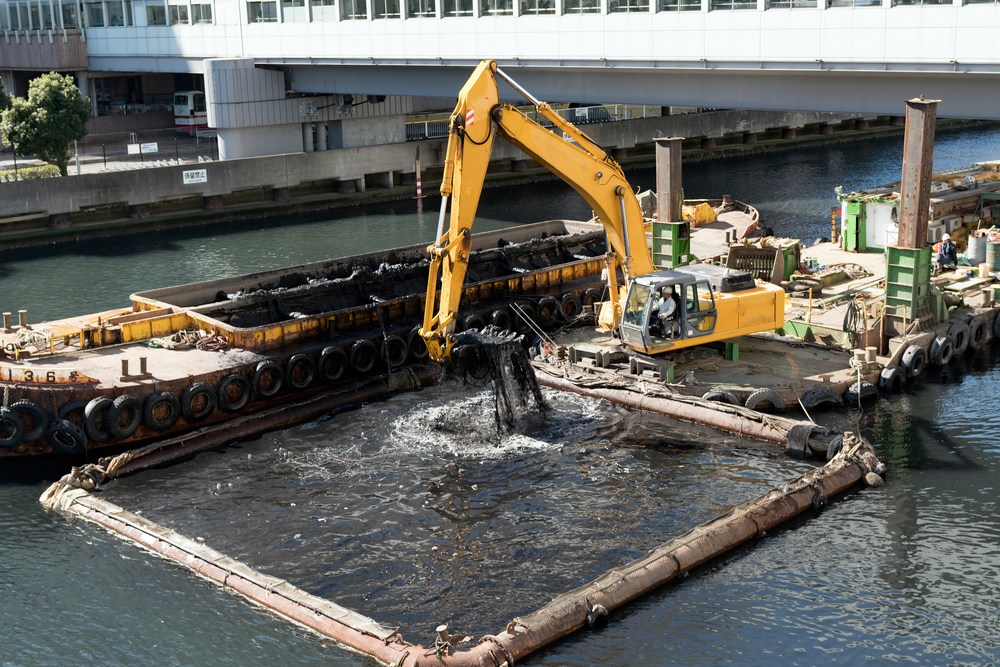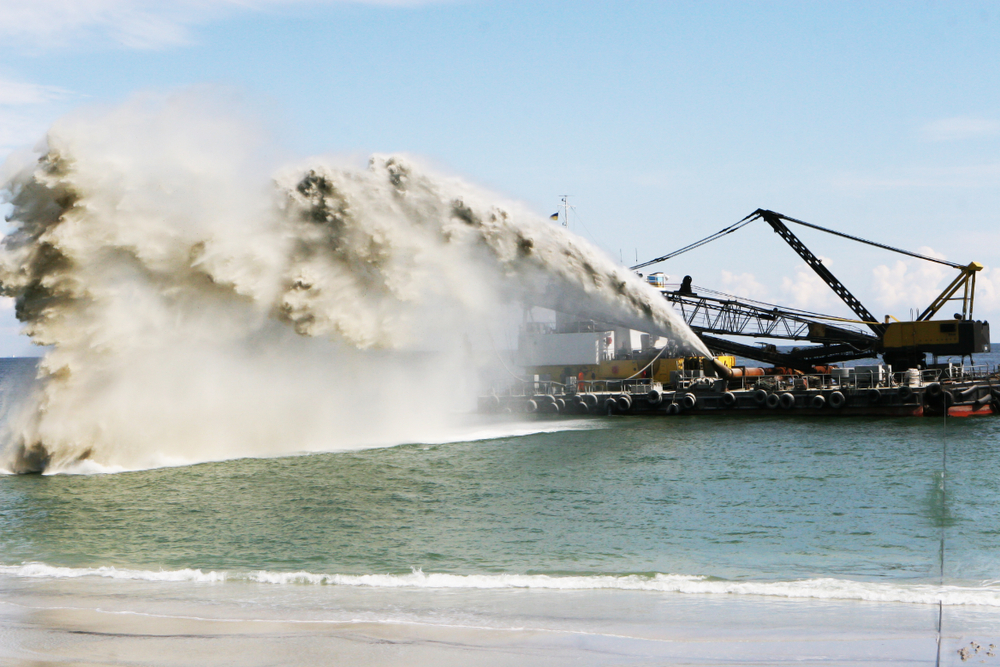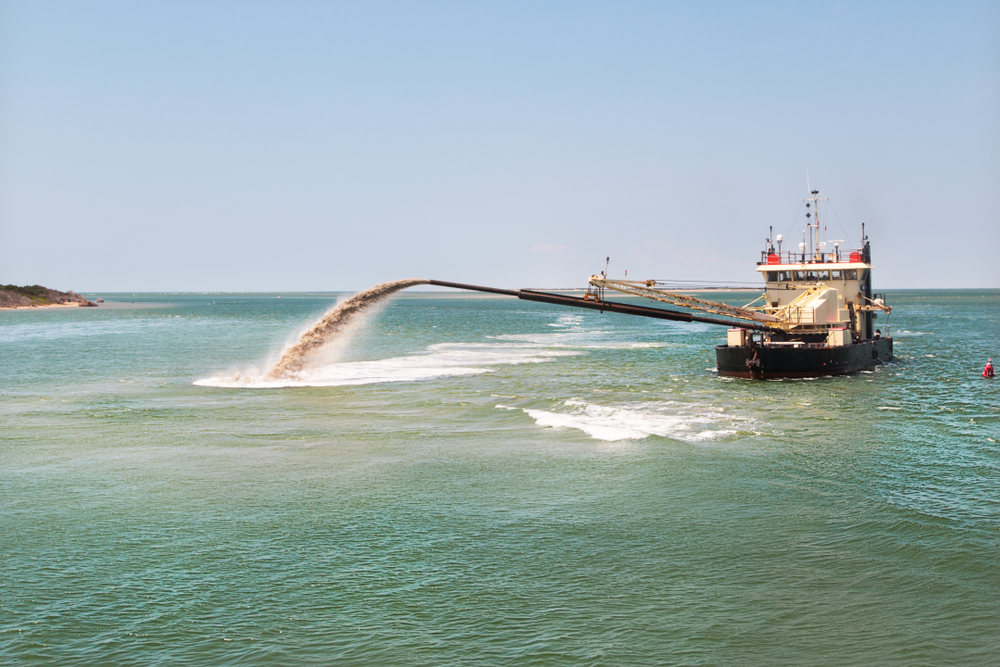Dredging is an essential process in marine construction and waterway maintenance. It ensures safe navigation, supports port expansion, enables beach nourishment, and helps in removing contaminated sediments. When it comes to choosing the most efficient approach for sediment removal, a critical comparison emerges: hydraulic dredging vs mechanical. These two dredge methods form the backbone of modern marine excavation, each with distinct advantages depending on soil type, environmental sensitivity, and project scale. Here is a detailed comparison, helping engineers, site managers, and contractors determine which method and equipment—such as cutter suction dredgers or clamshell dredgers—is best suited for specific conditions.
What is Hydraulic Dredging?
Hydraulic dredging uses pumps and pipelines to transport a slurry of sediment and water from the dredging site to a designated placement area. This method is highly productive, particularly for fine-grained materials and large-scale projects requiring long-distance transport.
Types of Hydraulic Dredgers
Cutter Suction Dredgers (CSD)
These dredgers use a rotating cutter head to dislodge compact sediments like clay or fine sand before suction. The slurry is then pumped to the disposal site through floating and shore pipelines. CSDs are ideal for harbor deepening and land reclamation.
Plain Suction Dredgers
These do not have a cutter head and are suitable for very soft materials like silt and mud. They are mostly used for maintenance dredging in ports or canals.
Trailing Suction Hopper Dredgers (TSHD)
These self-propelled vessels lower drag arms into the seabed to suck up sediments while moving. TSHDs are ideal for offshore dredging, beach nourishment, and maintenance of deepwater ports.
Advantages of Hydraulic Dredging
- High production rate for soft soils
- Capable of transporting sediment over long distances
- Continuous operation reduces downtime
Limitations
- High initial setup and equipment cost
- Significant water content in output (requires dewatering)
- Higher turbidity and environmental impact
What is Mechanical Dredging?
Mechanical dredging involves physically digging or lifting sediment from the seabed using heavy equipment mounted on barges or platforms. This method is ideal for compact soils, precision excavation, and projects in confined spaces.
Types of Mechanical Dredgers
Clamshell Dredgers
These use a hinged bucket to grab sediment vertically. Clamshell dredgers are mounted on cranes or barges and are highly accurate, making them suitable for environmental dredging and deepening projects near infrastructure.
Backhoe Dredgers
Similar to land-based excavators, backhoe dredgers are ideal for structured excavations in confined urban or dockside areas. They can handle dense or debris-laden material effectively.
Dragline Dredgers
These use a bucket suspended from a long boom to drag sediment across the seabed. While largely obsolete in modern marine construction, they still see use in shallow lakes or remote areas.
Advantages of Mechanical Dredging
- Superior control and precision
- Effective for coarse or compact material
- Minimal turbidity in controlled environments
Limitations
- Slower production rate
- Requires additional logistics for sediment transport (barges, hoppers)
- Not suitable for high-volume, long-distance sediment relocation

Mechanical dredging with a backhoe dredger provides accurate sediment removal in tight, urban waterways. This dredge method is ideal for marine excavation projects near infrastructure or docks.
Hydraulic vs Mechanical Dredging: Detailed Comparison
| Feature | Hydraulic Dredging | Mechanical Dredging |
|---|---|---|
| Material Type | Fine sediments (silt, mud, sand) | Coarse or dense (clay, gravel, debris) |
| Production Rate | High | Moderate to Low |
| Precision | Low to moderate | High |
| Water Content | High | Low |
| Setup Complexity | High (pipelines, pumps) | Moderate (cranes, barges) |
| Environmental Control | Low (more turbidity) | High (localized) |
| Disposal Handling | Pipeline slurry discharge | Requires barge transport |
| Best Applications | Harbor deepening, beach nourishment, large-scale maintenance | Contaminated sediment removal, dock construction, confined zone excavation |
Soil Types and Method Suitability
Hydraulic Dredging
This method excels in soft and fine-grained materials. Silts, muds, and loose sands mix easily with water to form a slurry that can be pumped. CSDs can handle some cohesive materials, but production drops with increasing resistance. TSHDs, although powerful, are ineffective in rocky or debris-laden beds.
Mechanical Dredging
Mechanical dredging is preferred for hard-packed clays, gravel, and construction debris. Clamshell buckets can precisely remove material with minimal dispersion. Backhoes provide superior breakout force to dig through dense layers. However, mechanical methods can struggle in extremely soft or fluid sediments, where buckets may lose material during lift.
Project Type Applications
Large-Scale Harbor Deepening
Hydraulic dredging is the preferred choice due to its ability to move vast quantities of sediment quickly. The Port of Miami Deep Dredge Project used cutter suction dredgers to increase depth and improve access for mega ships.
Dock Expansion and Confined Urban Projects
Mechanical dredging shines in areas requiring precision and spatial control. Backhoe dredgers were deployed in downtown Copenhagen during dock development due to their maneuverability.
Contaminated Sediment Removal
Environmental dredging projects often mandate clamshell dredgers due to their ability to limit turbidity and isolate sediments. For instance, the Hudson River PCB remediation relied on mechanical clamshells for precision excavation.
Beach Nourishment
Trailing suction hopper dredgers or cutter suction dredgers are typically used to pump sediment from offshore borrow areas directly onto beaches, making hydraulic dredging the method of choice.
Shallow Canal Maintenance
Draglines or small backhoes may be used for localized dredging where access and cost-efficiency are priorities. These are often maintenance jobs with minimal volume but high frequency.
Environmental Impact Considerations
Hydraulic dredging has a greater likelihood of increasing turbidity, which can impact aquatic ecosystems and lead to regulatory challenges. The sediment plume from suction heads can disturb spawning habitats and increase nutrient loads in water bodies. Mechanical dredging, especially when operated slowly and carefully, can isolate sediment and reduce water column dispersion. This makes it preferable for sensitive environments.
Moreover, contaminated sediments pose a greater environmental hazard if not contained. Mechanical dredging facilitates precise removal and packaging for transport to safe disposal or remediation facilities.
Mobilization, Logistics, and Cost Factors
Hydraulic dredging demands a substantial initial setup, including booster stations, pipelines, and dewatering facilities. Once operational, however, it is highly efficient, especially over long pumping distances. Mechanical dredging has lower setup requirements, needing barges, cranes, and transport vessels, but typically incurs higher per-cubic-yard costs due to lower volume and additional sediment handling.
| Cost Component | Hydraulic Dredging | Mechanical Dredging |
| Mobilization | High | Moderate |
| Operating Cost | Lower per volume | Higher per volume |
| Equipment Rental | Expensive | More economical |
| Dewatering Needs | Required | Often not needed |
| Transport Logistics | Pumped pipeline | Barged to site |

Hydraulic dredging with cutter suction dredgers enables direct slurry discharge for beach nourishment. This high-capacity dredge method ensures efficient sediment removal along coastlines.
Expert Recommendations by Scenario
Scenario 1: Expanding a Commercial Port
For high-volume excavation in silty or sandy environments, hydraulic dredging using cutter suction dredgers is recommended due to its continuous output and transport capabilities.
Scenario 2: Developing a Marina in an Urban Setting
Mechanical dredging with a backhoe or clamshell offers tight control and minimal disruption to surrounding infrastructure. It can work around dock pilings and support structural excavation.
Scenario 3: Dredging Near a Protected Estuary
Use mechanical dredging, especially clamshell systems, to minimize turbidity and avoid harming aquatic life. These are preferred when working under tight regulatory controls.
Scenario 4: Nourishing a Storm-Damaged Beach
Hydraulic dredging using TSHDs allows direct pumping from offshore sediment sources to the beach, maximizing efficiency and coverage.
Scenario 5: Cleaning a Shallow Agricultural Canal
Small backhoe dredgers offer mobility and simplicity, making them ideal for repeated seasonal maintenance where cost is a key consideration.
Choosing the Right Dredging Method
When evaluating hydraulic dredging vs mechanical dredging, there is no one-size-fits-all answer. The best method depends on soil composition, project objectives, environmental concerns, site access, and economic factors. Hydraulic dredging is optimal for fast, large-volume sediment removal, particularly in soft soils and expansive waterways. Mechanical dredging provides pinpoint accuracy, making it indispensable for projects with compacted soil or environmental sensitivity.
Project planners should consult with experienced marine excavation teams and conduct geotechnical assessments before finalizing the dredge plan. Matching the method to the task ensures not only operational success but also environmental stewardship and regulatory compliance.

